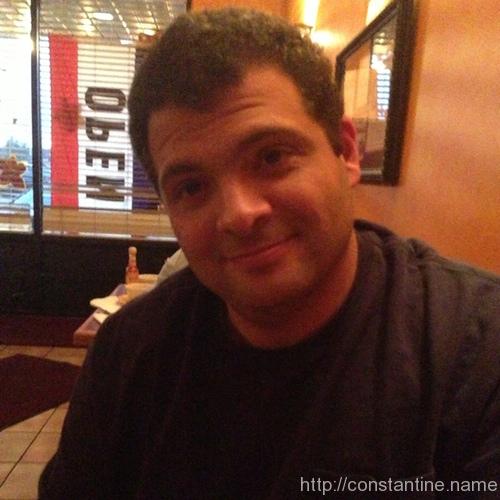There are these quite large, spiny plants along a trail I frequent. Even those of use who are thorny and unfriendly occasionally dress up nice.
ɕ

There are these quite large, spiny plants along a trail I frequent. Even those of use who are thorny and unfriendly occasionally dress up nice.
ɕ
The best arguments in the world won’t change a single person’s mind. The only thing that can do that is a good story.
~ Richard Powers
slip:4a1449.
I like my human experience served up with a little silence and restraint. Silence makes experience go further and, when it does die, gives it that dignity common to a thing one had touched and not ravished.
~ Djuna Barnes
slip:4a1229.
If you fear woes and misfortunes, then you are already unhappy. Those who fear misfortunes usually deserve them.
~ Chinese proverb
slip:4a967.
This blog deals specifically with the games based aspect of coaching. I recommend using a model of explicitly teaching skills and then combining this with purposeful practice drills. With primary school children, that almost invariably means playing games.
~ John ‘Hedge’ Hall from, Coaching through Play: How Does it Work? | LinkedIn
slip:4ulipu2.
I often mention parkour, FreeRunning, and Art du Déplacement and I just wanted to take a moment to mention that there are a ton of people (myself not included) who take teaching it very seriously. If you’ve ever wondered how it’s taught— well, here you go.
ɕ
Suppose he had passed his judgement upon a hypothetical proposition, and declared, ‘I judge the proposition, “if it be day, there is light,” to be false,’ what would have happened to the proposition? Who is being judged here? Who has been condemned? The proposition, or he who is utterly mistaken about it? So who on Earth is this man who has authority to pass such judgement on you?
~ Epictetus
slip:4a458.
We make art with everything we are, the doom and the glory of it. We make art to know ourselves, to locate ourselves in the web of being, to make ourselves more alive. We make art that, at its best, helps other people locate themselves and live.
~ Maria Papova from, Keith Haring on Creativity, Empathy, and What Makes Us Who We Are – The Marginalian
slip:4ubake1.
I think that art is, among other things, a physical something which exists separately from the artist. Art can be ephemeral—chalk work that disappears, a dance performance—but it exists in reality. (As a counterpoint: Art cannot exist solely in one’s imagination.) We even acknowledge that property of art being something-which-exists within the word artifact. (As in art-i-fact, and facts are concrete things which can be known about reality.)
Artists. Art. Artifacts.
Until just reading Popova’s comment, I hadn’t thought of creating a community as art; But now I am wondering.
I’m certainly a creative person, and creativity is required to create—hey, look at that—a community. Clearly a community isn’t summarily disqualified from being art simply because it is ephemeral, both in the sense of its appearance changing over time, and that it will one day cease to exist. But is it art?
Because a community sure looks like something that fits within what Popova is saying up there.
ɕ
This is the lesser told story about the quest for elite accomplishment. It’s common to hear about the exciting initial phase where you’re terrible but motivated and therefore see quick returns. But so many people, like C. K., soon hit a plateau. They’re no longer bad. But they’re also not improving; stuck in a circle that doesn’t take them anywhere.
~ Cal Newport from, How Louis C. K. Became Funny and Why it Matters – Cal Newport
slip:4ucabo39.
But I’m still left with the question: How do I distinguish, putting in the effort, from, bashing myself on the rocks? Because I’ve got the work-ethic, put-in-the-effort, do-the-hard-work, thing down pat. What I don’t seem to have—in my opinion—is success. I’m certainly not enjoying life generally. It’s just long stretches of hating myself in the form of insanely hard work, with brief windows of relaxation.
ɕ
If you want to build a ship, don’t drum up people to collect wood and don’t assign them tasks and work, but rather teach them to long for the endless immensity of the sea.
~ Antoine de Saint-Exupery
slip:4a469.
It’s not who we are, but what we do that defines us.
~ Bruce Wayne, in Batman Begins, (2005 film)
slip:4a324.

Nature has given us two ears, two eyes, and but one tongue – to the end that we should hear and see more than we speak.
~ Socrates
slip:4a100.
I think that “shutting up” has been the most difficult aspect of my Parkour journey.
In my youngling days — let’s define that as sub-30-years-old — I was always the clown: obnoxious; rude, crude and ill-mannered; smart ass. When you have a big ego and low self-esteem, you seek attention to try to make those ends meet. That’s probably a good benchmark definition of dysfunctional. Worse, I had no idea such was the case. Over the next ten years, (or so,) I started to realize that such behavior was dysfunctional and pathetic. That decade was finally followed by my beginning to try to change about 40 years of ingrained behavior.
It was at this point — just as I was trying to change the course of a very large ship with a very small rudder — that I started Parkour. At the time, I simply jumped into Parkour being my usual self. But two pushups into my first class I was stripped of my delusions of grandeur. Two minutes in, and I figured out that I was an out-of-shape pile of bacon. After two hours of trying to do something, anything, and failing and sweating and flailing and sweating more… Well, shit got real.
That first class was followed by a solid year of me having an argument with myself, in real-time, at every class. Every time I’d exhibit some variation of my dysfunctional behavior I’d mentally berate myself; Shut up. Train. After each class, I’d think back on all the cringe-worthy moments and think: Next time, shut up more. Train more.
Somewhere around two years in, my ship’s course had shifted far enough that the dysfunctional behavior was noticeably tailing off. Certainly, the behaviors I disliked were still frequent enough to bother me, but they WERE tailing off.
Now, three years in and going stronger than ever, I’ve made a lot of progress in terms of fixing myself mentally and physically. I can now say, with an air of experience: Everything has changed. And nothing has changed.
Shut up more. Train more.
ɕ
People universally tend to think that happiness is a stroke of luck, something that will maybe descend upon you like fine weather if you are fortunate enough. But that’s not how happiness works. Happiness is the consequence of personal effort. You fight for it, strive for it, insist upon it, and sometimes even travel around the world looking for it.
~ Elizabeth Gilbert
slip:4a145.

Yes. No mustache.
…and no, you have never seen me without a mustache.
ɕ

George Thorogood & the Destroyers. ba ba ba ba ba BA BAD . . .
ɕ